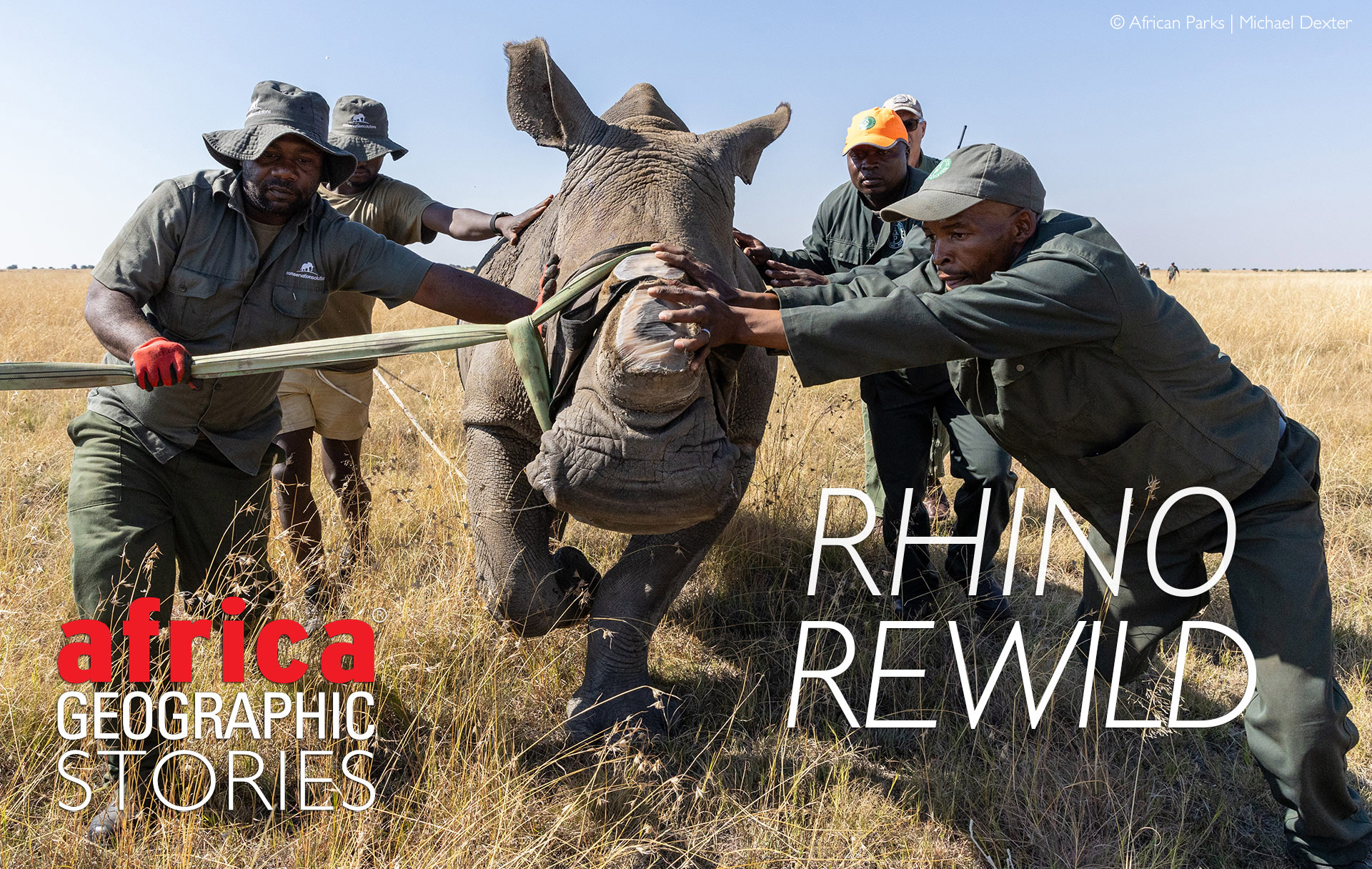
Is this the most critical wildlife conservation undertaking of our time?


As I scraped the early morning winter frost from my tent, I could not help but wonder if this was a suitable place for white rhinos. And yet, here, in the bitter cold of winter on the Highveld of South Africa, a short drive from Johannesburg, resides the world’s largest private white rhino herd. The 2,000-strong herd of Ceratotherium simum represents 12% of the remaining wild population. Also published on Mongabay.
One hour later, I was staggering backwards across a tussocked grass paddock, hauling on a thick rope attached to a blindfolded 2.2-ton rhino, which had been darted with a sedative half an hour earlier. Muscles screaming and short of breath, I kept a keen eye on this beast as he tottered unsteadily a few meters away, lest his sporadic speed increases result in my demise.
Thirty minutes earlier, our team of eight had watched from the back of a bakkie (pickup truck) as a vet darted the rhino with an immobilising drug cocktail from a hovering helicopter. Then, a horseback rider herded the rhino to a clear area while the tranquiliser took effect. The rhino’s indignant trot turned to a slow, determined walk with comical goosesteps before he stumbled onto his side. Then it was “Go, go, go!” as we sped to the scene and clambered out.

I watched as the experienced team sprang into action, administered a partial antidote, tested vitals, lubricated his eyes, and wrapped a blindfold over that massive head. Clipboards were rapidly filled up with data specific to our rhino. Within minutes, the horns (one large and one small) were removed with a chainsaw and signed for by an armed guard for safekeeping and subsequent secure offsite storage.
Why the rhino population crash?
It’s worth spending a few moments contextualising the worldwide rhino population crash at the hands of humankind, the backstory to my tale. Following the publication of naturalist William John Burchell’s drawings of the southern white rhino in 1817, European hunters, armed with increasingly effective rifles, decimated the species across Southern Africa. “That the mortality due to man was not negligible is made quite clear by the very few hunters who put pen to paper recording, for instance, the destruction of eighty animals by two men in one hunting season alone, or the slaughter of eight at a water hole in a single day,” celebrated rhino conservationist Ian Player wrote for the Natal Parks Service magazine in 1960. By the early 1900s, there were fewer than 100 left.
In 1895, Umfolozi Junction Reserve, today known as Hluhluwe-iMfolozi Park, was established specifically to save the white rhino from hunting. By the 1950s, the population had grown to more than 400. In 1960, Player began translocating groups of white rhinos to protected areas throughout their historic Southern African range. “Operation Rhino” was a spectacular success, seeing the population grow to about 20,000 by 2010.
But by 2012, a new wave of poaching threatened the species. Rhinos living in national parks were worst affected, with private landowners better resourced to protect their rhinos. Rhino deaths started outnumbering births, and the current population estimate of white rhinos is 16,803.
The killings are driven by rhino horn being considered a status symbol by wealthy Vietnamese and Chinese citizens, leading to hyped-up prices and stockpiling. Black market dealers use misleading campaigns via social media gossip linking rhino horn to nonsense cures for cancer and other life-threatening diseases. Lest you judge, this is no different to believing that diamonds (also extracted at high environmental cost) represent forever love. The use of rhino horn in Chinese Traditional Medicine to supposedly reduce fever and stop nose bleeds (amongst other ailments) provides the convenient cloak under which some of this skullduggery festers, and criticism is often dismissed as being culturally insensitive. Rhino horn consists of keratin – the same stuff as nails and hair.
A coterie of underground criminal syndicates (drugs, terrorism, weapons and human trafficking) have jumped on the bandwagon to benefit from the poaching and trafficking operations. The inevitable result of this is the eradication of rhinos over much of their historic range and the significant reduction in recent years of the stronghold populations in Southern Africa.
The growing role of private rhino owners, who likely now conserve more than 50% of Africa’s rhinos, is an important one. A supportive policy and economic environment have enabled their contribution, but this arrangement is becoming more difficult to sustain as costs associated with protecting rhinos against poaching skyrocket and revenue-generating options become insufficient.
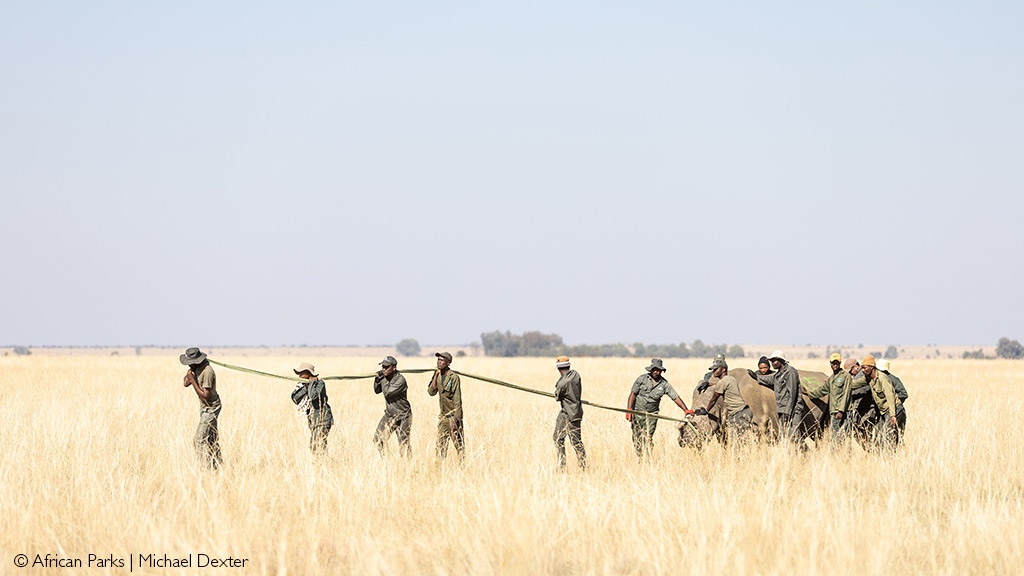
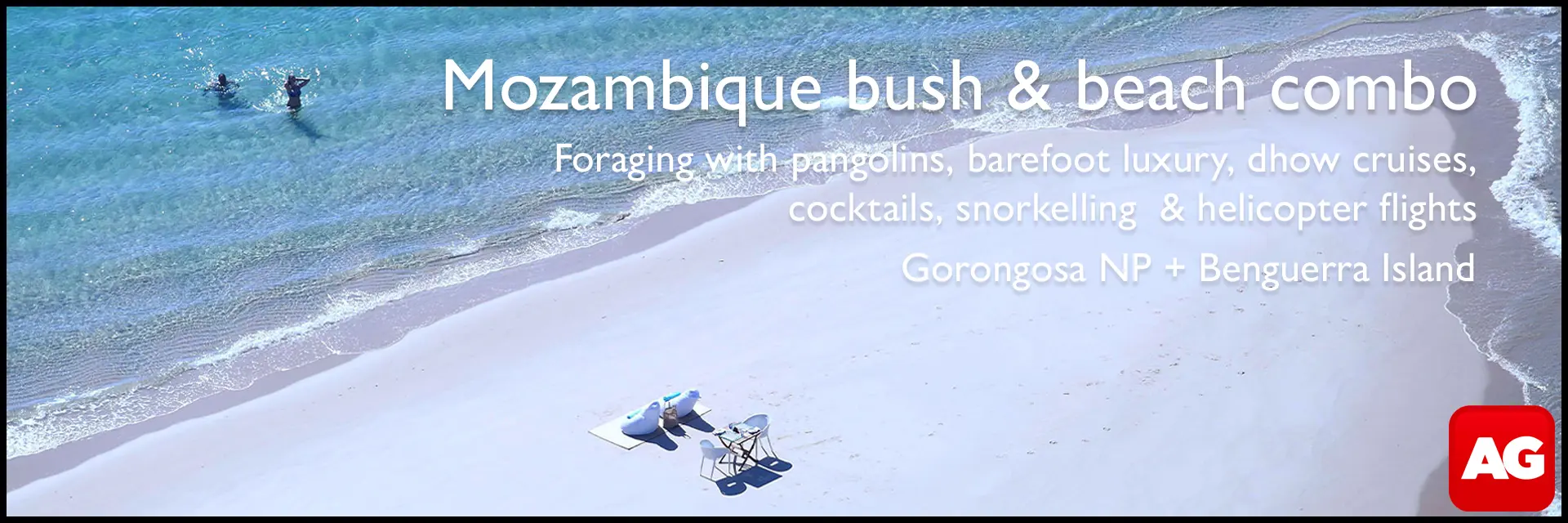
The world’s largest rhino breeding farm
The precarious status of rhinos prompted wealthy property developer John Hume to establish a large rhino-breeding operation on a Highveld farm. He planned to sell their horns (which can be regularly harvested without harming the animal), with the hope that this would displace the demand for poached rhino horn.
This extremely successful breeding operation had a few flaws that ultimately drove Hume to financial ruin. The straight-line logic of Hume’s model was naive in the face of today’s rampant illegal wildlife trafficking industry that uses legal channels to launder animal parts. But Hume’s biggest gamble was that CITES, the global wildlife trade convention, would permit international sales of rhino horn. This didn’t happen, despite enormous pressure being brought to bear on CITES by his legal team, alongside an active “sustainable use” lobby and rhino owners who have faced mounting security costs directly as a result of poaching. After hanging in there for as long as possible, Hume sold his farm and rhinos to African Parks, a nonprofit that manages protected areas across the continent. Under the deal, Hume retains ownership of a large store of harvested horns.
African Parks has now launched a project to rewild the farmed rhinos. Some will go to reserves managed by African Parks itself, and others will go to other well-managed reserves, such as those in the Greater Kruger region of South Africa.
Back to my first rhino of that day: the next procedure was to notch his ears to make it easier to identify him. Of course, blood was involved, but I was assured the procedure is relatively painless — a bit like human ear piercing. Finally, small tracking devices were attached to his ears to monitor his movement.
Then we attached ropes to his neck and back leg and cajoled him to stand up — not an easy task for the drugged behemoth. That done, we marched him some 500 meters, about a third of a mile, across the savannah to one of 32 crates before removing the blindfold and ropes and administering the final round of drugs: an antidote to the immobilising drug and a long-acting tranquiliser for the transport portion of this rhino’s journey that day. Then, it was back to the pickup to wait for the call that the next rhino was ready.

At one stage, I retreated to the central capture area to gain a top-down perspective on this mind-boggling logistical undertaking from atop one of the transport crates. I saw the helicopter hovering above a rhino and her baby, numerous pickups delivering crew and supplies to capture sites, three groggy rhinos being frog-marched toward transport crates, rhino camp masters on horseback galloping after their next target, and cranes lifting transport crates and the precious cargo onto trucks. This is conservation at scale: an impressive collaboration of skilled professionals working under stressful, exhausting conditions, overseen by a management team obsessed with detail.
Of course, problems can arise when operating at this scale with such enormous creatures. I watched as one rhino shook off her blindfold and powered away from the transport crates, dragging four men with her. Within minutes, though, backup arrived, and the snorting giant was led to her crate. At the heart of the operation is data about every rhino on the farm. Each farm paddock has an attendant camp master who knows every rhino in their care. The choice of which rhinos to translocate on the day was made beforehand based on age and physical condition. Mothers with calves younger than two years old were left behind, while those with older calves moved on. The rhino camp master would spend the day on horseback, communicating via radio the identification of their next target to the vet in the helicopter, who would refer to a data set about that rhino to work out tranquiliser dosage levels.
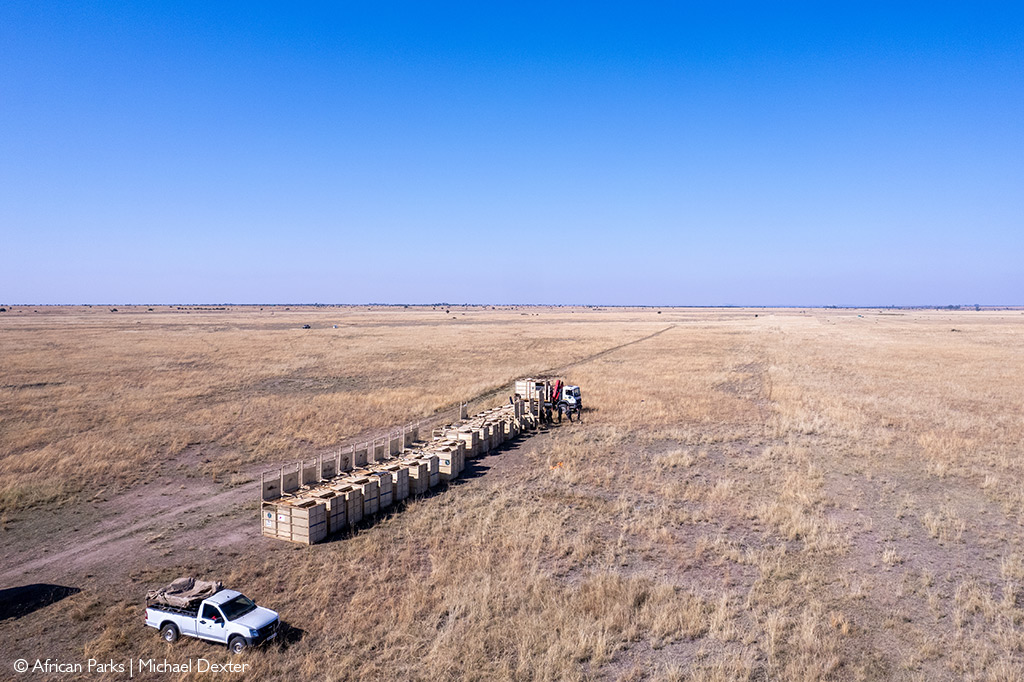
It soon became clear to me that every decision made was based on the well-being of the rhinos. This operation was planned for a Monday morning, resulting in the large team gathering at the farm that Sunday night. However, nature had a different plan, and we ended up being delayed by three days due to a cold front, which brought lower-than-normal temperatures and increased the risk of pneumonia during the transport leg of the operation when the wind chill is a factor. And so we hung around on the farm for three days, although some of the contracted vets and security personnel took the gap to attend to other matters before returning the night before the operation took place. Once all 32 rhinos were successfully crated that day, ownership was transferred from African Parks to the new owners for the road trip of a lifetime: to freedom in the wild. The new owners fund the rhino translocation, with African Parks donating the rhinos. In this case, the rhinos were destined for the Greater Kruger, a coalition of private nature reserves sharing the unfenced western border of the massive Kruger National Park.

Will the rhinos be safe in their new home?
The predictable question for these rhinos is: Will they be safe from poaching? These private nature reserves maintain expensive and effective anti-poaching operations with excellent results.
Rhinos usually don’t move far from a good source of food and water, so most of these translocated rhinos aren’t expected to wander too far into the adjoining Kruger National Park, which has a higher poaching rate. Despite immense dedication from the rangers and management of the national park, this vast wilderness has multiple entry points, making it challenging to secure. Also, arrested poachers often walk free due to endemic corruption at all levels, including in South Africa’s law enforcement agencies. The white rhino population in Kruger has declined from an estimated 10,621 in 2011 to 1,850 in 2022 – a massive crash of 83% in 11 years. There’s little doubt that some of these translocated rhinos will be poached; it’s a reality that stares us all in the face as pragmatic conservation decisions are made in the interest of the species.
The journey home
So we headed out in convoy from the farm: four large trucks carrying 32 rhinos and several escort vehicles with contracted security personnel bristling with weapons. Seventeen hours later, we reached a private nature reserve in the stunning Greater Kruger bushveld with an excellent antipoaching record and a suitable white rhino habitat.
I have done many road trips across Africa, but this one takes the cake and will forever be etched into my memory. We all communicated via two-way radios – and the constant updates were an eye-opening insight into how seriously the security personnel took their roles. Our escorts often identified suspicious driving behaviour by third parties and positioned their vehicles to prevent their engagement with the trucks. Multiple stops were made so that the onboard vet could check on the rhinos. At about midnight, our convoy pulled into a deserted area for four hours of much-needed sleep – often disturbed by probing torch lights as our security team patrolled the area non-stop. Many nostril-quivering coffees and energy drinks later, we crawled into the Greater Kruger release site an hour after sunrise – exhausted but elated to have completed the most dangerous leg of the journey.
But our task was far from complete. It took the team another seven hours of back-breaking work to hoist the crates into a boma. This small, fenced-off area would serve as the rhinos’ home for a period of recovery and habituation while a team monitored their health. After that close surveillance period, the boma walls would be dropped, and the rhinos would be released into the wild. As the last rhino left its crate and explored the boma in the warm Lowveld, there was a collective sigh of relief and appreciation by all present at the sight of 32 content rhinos ambling around.

Will farmed rhinos survive in the wild?
“Our aim is to de-risk rhinos by establishing up to 20 subpopulations across the continent, each with no fewer than 50 rhinos,” says Don Jooste, manager of African Parks’ Rhino Rewild project, whose framework was developed with external rhino specialists to determine the requirements for potential recipient areas.
“To be rhino-ready, potential recipient areas submit a proposal that is reviewed by African Parks and the Rhino Rewild Advisory Committee. The proposal has to cover habitat assessment, security measures and assessment, country regulatory support, and the recipient’s financial and management ability. Approved areas are subjected to a site visit, after which translocation logistics are planned and implemented.”
Representing one of these new rhino owners was Sharon Haussmann, CEO of Greater Kruger Environmental Protection Foundation (GKEPF), and a headstrong but gentle soul who has carved out her role in this male-dominated wildlife industry. Sharon, a longtime friend and sometimes travel companion when we seek out spectacular wild areas and inspirational conservationists, lives in my hometown. She’s the driving force securing some of African Parks’ rhinos for the Greater Kruger and the person who assumed custodianship of the precious cargo that day. During our many hours together on this sojourn, Sharon and I discussed the risks of introducing farmed rhinos to the harsh realities of predation, disease, malnutrition and dehydration in the wild.
Lions and hyenas represent a real threat to these naive rhinos. These apex predators quickly identify vulnerability and go in for the kill. Another threat is dominant wild rhino bulls, who may not take kindly to newcomers in “their” domain. A rhino bull can tip the scales at more than 2.5 tons and inflict severe damage and even death. Then there’s the threat of bushveld diseases that don’t occur in the cooler climes of the Highveld. The tick load is higher in the Lowveld, and related diseases are a concern. Further afield, trypanosomosis, or sleeping sickness, is a life-threatening vector-borne parasitic disease that affects vertebrates, including rhinos. Tryps, as it’s known, is carried by tsetse flies that don’t occur in the Kruger area but are found in other regions that will receive these rhinos.
African Parks has successfully translocated other rhinos to areas with high disease risks, such as Akagera National Park in Rwanda, and the organisation’s meticulous planning caters for disease risk. To add to the threats these rhinos face, their farm diet consists of a guaranteed supply of paddock grasses, supplementary crops, and concentrate pellets, with a drinking trough just a brief stroll away. In the bushveld, they make do with seasonally fluctuating quality and quantity of grass and water resources.
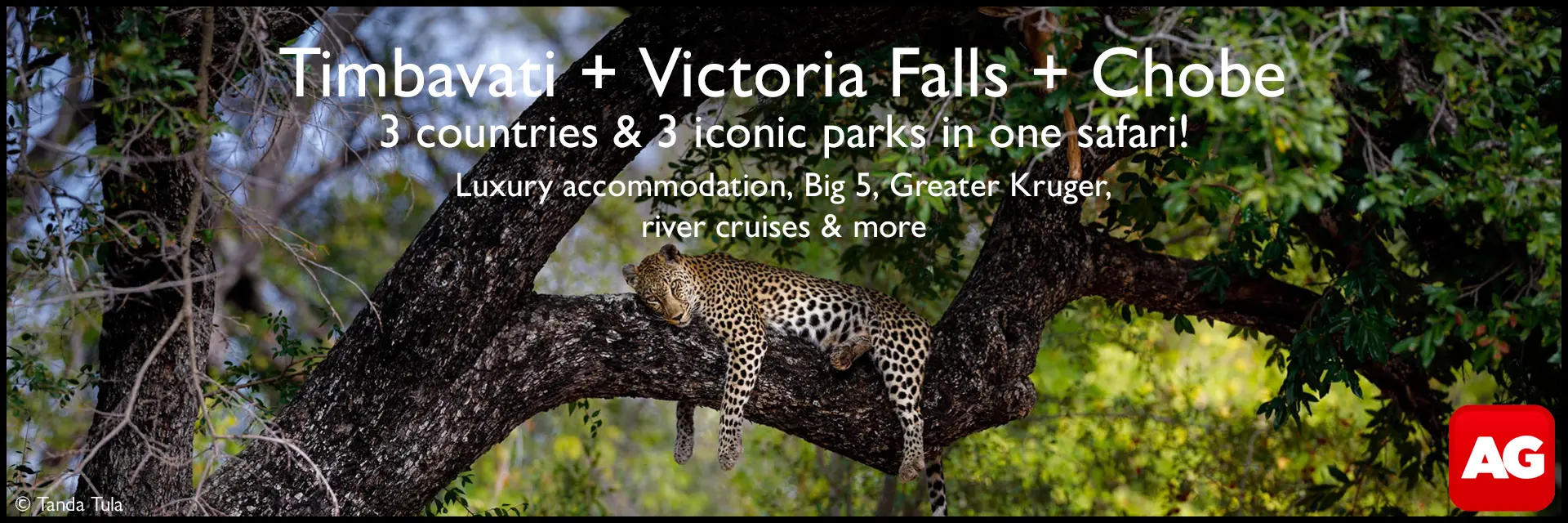
“Of course, some of the introduced rhinos will die from one or more of the above threats. But the majority will survive and, in so doing, play a vital role in ensuring the ongoing survival of white rhinos in the wild,” Haussmann says.
“From my perspective, Rhino Rewild satisfies two different objectives with vastly different implications and requirements. Firstly, the welfare of these farmed rhinos is important. It’s no secret that funding for the farm had dried up and that the previous owner was cutting corners. When African Parks took over this farm, its experts assessed each rhino and had to implement strict measures to improve the herd’s health.”
“Secondly,” continues Sharon, “this private herd represents vital genetics and significant numbers to bolster the wild rhino population. I see Rhino Rewild as marrying those two objectives. Yes, there will be deaths once these rhinos are released into the harsh world governed by Mother Nature, but the benefits far outweigh the risks. It’s the same with all rewilding projects. Lessons will be learned from this pioneering project that will power African conservation. This is about hope. Hope for open ecosystems, rhino populations and these individual rhinos.”
 DID YOU KNOW that African Parks offers safari lodges and campsites where 100% of tourism revenue goes to conservation and local communities? You can plan and book your African Parks safari by clicking here.
DID YOU KNOW that African Parks offers safari lodges and campsites where 100% of tourism revenue goes to conservation and local communities? You can plan and book your African Parks safari by clicking here.
The tale of one of the younger rhinos released into the Greater Kruger a few weeks earlier demonstrates the seriousness with which Greater Kruger and African Parks treat the welfare of the rhinos in their new destinations. During the final inspection before release, she was found to have lacerations around her eyes. The vets were not sure of the cause of the damage, but they stitched her up shortly before her release. Within days, she was separated from her mother, cornered and attacked by a clan of hyenas, and then subsequently also attacked by a dominant wild rhino bull.
It soon became apparent that this young rhino needed further assistance. She was again darted and found to be dehydrated, and her eye condition had deteriorated. Vets immediately moved her to an intensive care facility to recover from the trauma and regain her condition. The latest update is that her eye condition has cleared up, and she has put on weight. Once deemed stable, this young rhino will be transferred to another facility to join a small herd of young rhinos that will be released into the wild. This story encapsulates what my sense of Rhino Rewild is about: the application of rigorous science in the interests of the rhino population, combined with the ethical treatment of individual rhinos.
Recent status updates on the rhinos rewilded into Greater Kruger include a pregnant cow giving birth to a healthy baby, several sightings of rhinos integrating into the existing wild population, and mating between a wild territorial bull and a rewilded cow.
During a rare quiet moment amid this epic mission, Haussmann showed me how they keep track of every released rhino from earlier Greater Kruger translocations via a mobile app. Watching a livestream of locations and routes as these precious creatures explored their new home gave me goosebumps.
Northern white rhinos are extinct in the wild because of poaching and the illegal horn trade to feed humankind’s self-obsession. Their southern counterparts stand a better chance, partly because of this brave, visionary project. A luta continua!
About African Parks
African Parks is a non-profit conservation organisation that takes on direct responsibility for rehabilitating and managing protected areas in partnership with governments and local communities. They manage 22 parks across 12 countries, encompassing over 20 million hectares – the most area under protection for an NGO in Africa, with the largest counter-poaching force.
About Greater Kruger Environmental Protection Foundation
GKEPF is a not-for-profit organisation that assists with the cooperation and coordination necessary to combat environmental crime in the Greater Kruger region. Its area of focus includes the middle portion of Kruger National Park and the private reserves on the eastern and western borders of the park.
About Simon Espley
Simon is the CEO of Africa Geographic and founder of Ukuri – safari camps for responsible travellers. His African travels are in search of wilderness, elusive birds and real people with interesting stories. A qualified chartered accountant, he lives in South Africa with his wife Lizz and 2 Jack Russells.
To comment on this story: Login (or sign up) to our app here - it's a troll-free safe place 🙂.![]()




